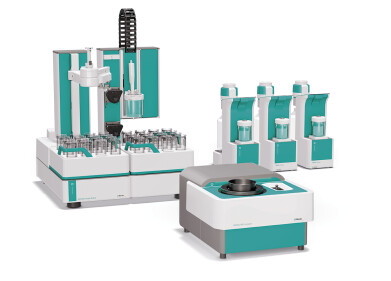Mass Spectrometry & Spectroscopy
What is a Good Aerobic Plate Count?
May 27 2022
Of all the methods used to assess the safety of food and beverage products, Aerobic Plate Count (APC) is one of the most useful. Rather than calculate total bacterial population and identify individual strains, APC is used as an “indicator” of microorganisms. Data offers an estimate of the number of microbes in a sample that multiply at temperatures of between 25 to 40°C, i.e. the mesophilic range.
“The aerobic plate count (APC) is intended to indicate the level of microorganism in a product,” read Laboratory Methods guidelines published by the US Food & Drug Administration. “APC data is used to assess sanitary quality and ensure producers and retailers are meeting good manufacturing practices (GMPs).”
So, what’s considered a good Aerobic Plate Count? Read on to find out more about acceptable APC levels and how the parameter is used in the food and beverage sector.
Testing for indicator bacteria
Aerobic Plate Count is often used to detect a family of “indicator” bacteria called Enterobacteriaceae. The family includes several strains found in the intestinal tracts of warm-blooded animals, such as Salmonella and Shigella. APC results that indicate Enterobacteriaceae concentrations of more than 104 per gram suggest food is contaminated and unsafe for consumption.
“Results of the APC can provide a food processor with information on the quality or handling history of raw materials, food processing and storage conditions, and handling of the finished product,” reads Food Safety and Quality Systems in Developing Countries. “Additionally, it can be used to determine the shelf-life or forthcoming sensory change in a food product.”
The role of benchmarks
As bacterial populations vary between different products, no single Aerobic Plate Count is considered standard. Instead, analysts use different benchmarks to assess the safety and hygiene of a sample. For example, an article published in the International Journal of Livestock Research states “According to FSSR (2016), the aerobic plate count/ml- for raw milk shall be less than 200,000/ml and for pasteurised milk shall be less than 5 x104 /ml if it is termed to be satisfactory/acceptable quality.” If microorganism concentrations are higher than the benchmark value, the product is considered unsafe for consumption.
Every year, Salmonella is the cause of more than 50 deaths in the UK, according to the European Centre for Disease Prevention and Control (ECDC). Foodborne norovirus, Listeria monocytogenes, Clostridium perfringens and Campylobacter also result in dozens of fatalities. Testing plays an important role in preventing foodborne illnesses and saving lives. Find out more in ‘Bacteria in Food - Types, Testing & Problems’
Digital Edition
Lab Asia 31.2 April 2024
April 2024
In This Edition Chromatography Articles - Approaches to troubleshooting an SPE method for the analysis of oligonucleotides (pt i) - High-precision liquid flow processes demand full fluidic c...
View all digital editions
Events
Apr 22 2024 Marrakech, Morroco
Making Pharmaceuticals Exhibition & Conference
Apr 23 2024 Coventry, UK
Apr 23 2024 Kintex, South Korea
Apr 23 2024 Seoul, South Korea
Apr 24 2024 Jakarta, Indonesia




.jpg)













